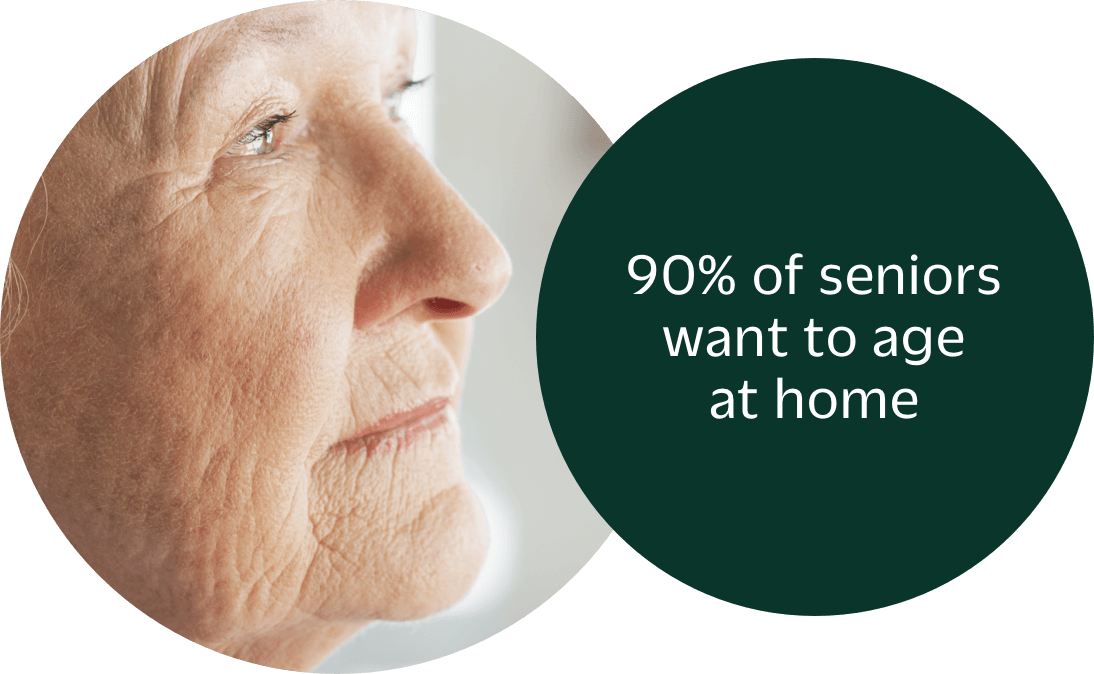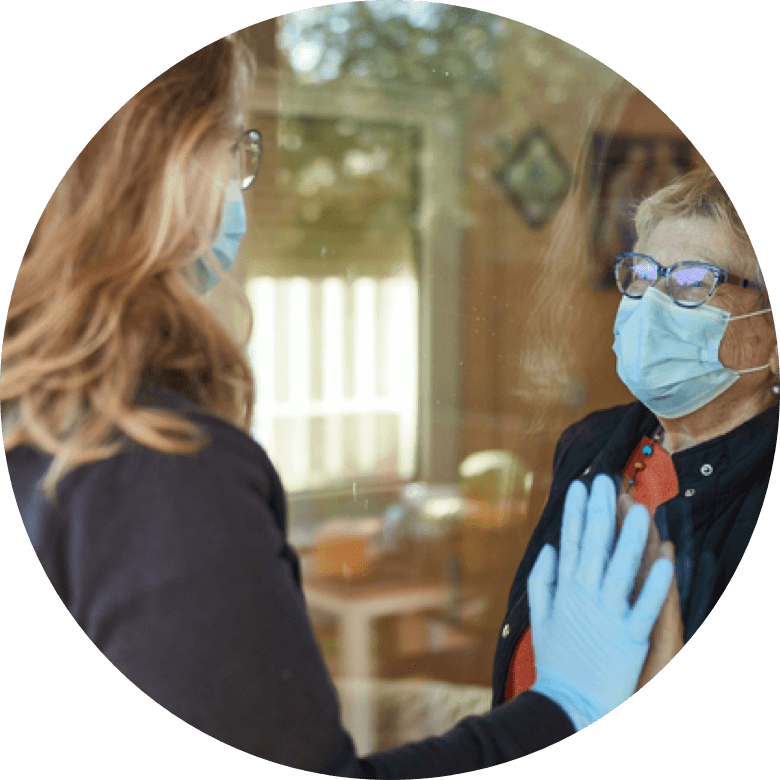The Longevity Care Crisis
There are 28,650 residential care communities in the United States.

The old continuum of longevity care
An entire senior care industry was built around the idea that people would willingly leave home for residential communities, where they would receive increasingly specialized care over the remainder of their lifetimes.

Living at
Home

Independent
Living

Assisted
Living

Skilled
Care

Specialty
Memory Care
New care models must emerge.
With 90% of U.S. seniors planning to stay in their own home for the next 5-10 years, care offerings must evolve to support aging in place, until it's no longer possible for loved ones to live safely at home.

Living at
Home

Assistive
Products

Home Support
Services

Part Time
Daily Care

Specialty
Memory Care
COVID-19 intensified the desire to avoid or delay residential care decisions.

A critical shortage of professional caregivers
As demand for in-home care skyrockets, millions of current care workers are retiring or finding new professions, creating a severe shortage of professional caregivers. By 2026, the U.S. will have a projected 7.8 million job openings.
How will this gap be filled?
Family members feel the pressure of providing care.
With a shortage of home care workers and a lack of other affordable, high-quality care options, family caregivers feel increasingly overwhelmed – mentally, physically, and financially.
~42 million
US adults provide unpaid care to a loved one over 50.
26%
of unpaid caregivers are supporting a loved one who has Alzheimer’s or other dementia.
>60%
of all US unpaid caregivers are women.
23.7 hours
on average spent per week providing unpaid care.
It’s time for a new generation of longevity care solutions.
As millions choose to age at home, a new generation of longevity care solutions must emerge to support not just those who require care, but also those who provide it.
These transformative, new care models must be more affordable, accessible, and convenient, but without sacrificing a high standard of care.